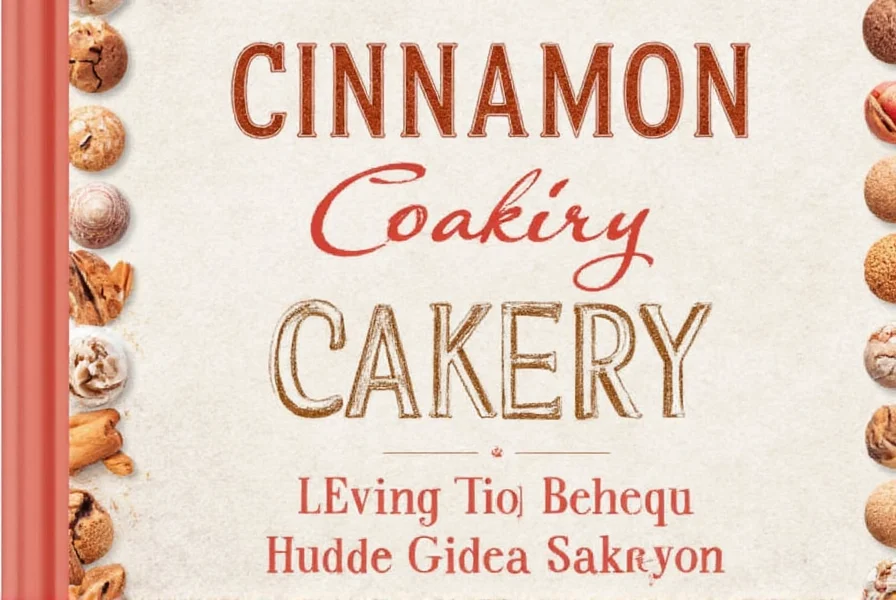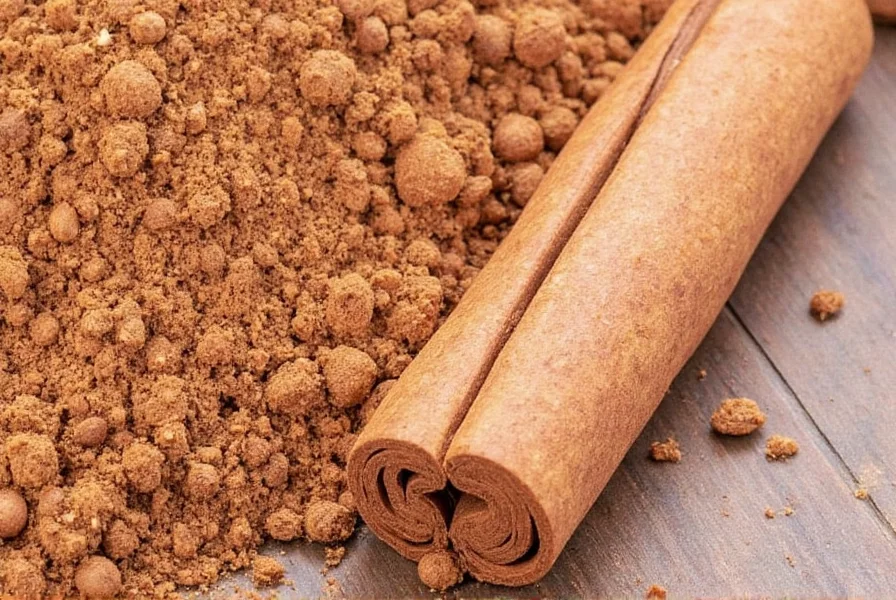Table of Contents
- Ceylon vs Cassia Cinnamon for Baking: Key Differences
- Exact Cinnamon Measurements for Perfect Baking Results
- How to Prevent Bitter Cinnamon in Baked Goods
- Proper Cinnamon Storage to Maintain Freshness and Potency
- Understanding Different Cinnamon Varieties and Their Best Uses
- Professional Baking Tips for Maximum Cinnamon Flavor
- Cassia Cinnamon Safety: Understanding Coumarin Levels in Baking
- Best Baked Goods for Each Cinnamon Type
- Conclusion: Mastering Cinnamon in Your Baking
Ceylon vs Cassia Cinnamon for Baking: Key Differences You Need to Know
When searching for "ceylon vs cassia cinnamon for baking," you need precise, actionable information. Here's what matters most:
Ceylon cinnamon ("true cinnamon") has a delicate, sweet flavor perfect for subtle applications. It contains significantly less coumarin (about 0.017g/kg) compared to Cassia cinnamon (2.1-4.6g/kg), making it safer for heavy use. For most home baking needs where cinnamon is a supporting flavor (like in apple pie or cookies), Cassia works well due to its stronger, more robust profile and affordability.
However, when cinnamon is the star ingredient (like in cinnamon rolls), use Ceylon if you're making large batches or for children. The European Food Safety Authority recommends no more than 0.1mg of coumarin per kg of body weight daily. For a 150lb adult, this means limiting Cassia to about 1.5 tablespoons per day.
Exact Cinnamon Measurements for Perfect Baking Results
Confused about "how much cinnamon to use in baking"? Here are precise measurements based on professional baking standards:
- Subtle flavor (cookies, muffins): 1/2 to 1 teaspoon ground cinnamon per batch
- Moderate flavor (spice cakes, pumpkin bread): 1.5 to 2 teaspoons per batch
- Strong cinnamon presence (cinnamon rolls, snickerdoodles): 2-3 tablespoons for filling, 1-2 teaspoons in dough
- Cassia substitution tip: Use 20% less Cassia than recipe calls for since it's more potent
For "can I substitute ground cinnamon for cinnamon sticks in baking", use this conversion: 1 cinnamon stick = 1/2 teaspoon ground cinnamon. However, cinnamon sticks work best for infusing flavors into liquids (like custards), while ground cinnamon integrates better into batters and doughs.
How to Prevent Bitter Cinnamon in Baked Goods
If you've experienced "why does my cinnamon taste bitter in baked goods", you're not alone. Bitterness happens for three main reasons:
- Expired cinnamon: Ground cinnamon loses potency after 6 months; sticks last up to 1 year
- Overheating: Cinnamon burns at 350°F (177°C) - keep baking temperatures below this
- Too much Cassia: Its natural compounds turn bitter when used excessively
Solutions to fix bitter cinnamon:
- Test freshness by rubbing between fingers - weak aroma means it's time to replace
- Reduce baking temperature to 325°F (163°C) for cinnamon-heavy recipes
- Add balancing ingredients: 1/4 teaspoon lemon juice or 1/2 teaspoon vanilla per teaspoon of cinnamon
- Switch to Ceylon for delicate baked goods where bitterness is problematic
Proper Cinnamon Storage to Maintain Freshness and Potency
"Does cinnamon expire or lose potency"? Yes - here's how to maximize shelf life:
| Type | Optimal Storage | Shelf Life | Freshness Test |
|---|---|---|---|
| Ground Cinnamon | Airtight container, away from light/heat | 6 months | Rub between fingers - strong aroma = fresh |
| Cinnamon Sticks | Dark glass jar, cool pantry | 12-18 months | Deep reddish-brown color = fresh |
| Opened Package | Refrigerate in freezer-safe container | 12 months | Bright flavor when tasted = fresh |

For "best cinnamon for daily baking", ground Cassia stored properly will maintain sufficient potency for regular use. For special occasions or professional baking, invest in fresh Ceylon sticks.
Understanding Different Cinnamon Varieties and Their Best Uses
Not all cinnamon works equally well for every baking application. Here's how to choose:
| Variety | Best Baking Applications | When to Avoid | Cost Comparison |
|---|---|---|---|
| Ceylon (True Cinnamon) | Delicate pastries, custards, light-colored cakes | When strong cinnamon flavor is desired | 3-4x more expensive than Cassia |
| Cassia (Chinese) | Cinnamon rolls, gingerbread, spiced cookies | Large-batch baking for children/sensitive individuals | Most affordable, widely available |
| Saigon (Vietnamese) | Where intense cinnamon flavor is needed | For subtle applications or safety concerns | 2x Cassia, less than Ceylon |

For "what baking recipes work best with cinnamon", yeast-risen doughs (cinnamon rolls, babka) benefit most from Cassia's robust flavor, while delicate French pastries perform better with Ceylon's subtlety.
Professional Baking Tips for Maximum Cinnamon Flavor
Implement these "pro cinnamon baking techniques" immediately:
- Bloom cinnamon in warm butter or oil before adding to dough (enhances flavor release)
- Layer cinnamon - mix some into batter AND sprinkle between layers for even distribution
- Use freshly ground - grind sticks 5 minutes before baking for 40% more volatile oils
- Balance acidity - pair with citrus zest (orange works best with cinnamon)
- Add late in process - incorporate after other dry ingredients to prevent clumping
For "cinnamon roll baking secret", create a paste with equal parts cinnamon, softened butter, and brown sugar - this prevents the common issue of dry, crumbly filling.
Cassia Cinnamon Safety: Understanding Coumarin Levels in Baking
When searching "is cinnamon safe to use in large quantities for baking", this is critical information:
Cassia cinnamon contains 2.1-4.6g/kg of coumarin, while Ceylon contains only 0.017g/kg. The European Food Safety Authority sets the Tolerable Daily Intake at 0.1mg per kg of body weight. For practical baking:
- A standard cinnamon roll filling (3 tbsp Cassia) contains approximately 12mg coumarin
- This equals the maximum safe daily amount for a 265lb adult (120kg)
- Children under 60lbs should limit to 1 cinnamon roll (1.5 tbsp Cassia)
For high-cinnamon recipes (like cinnamon roll bars or cinnamon-heavy breads), use this substitution guide:
- Replace 50% of Cassia with Ceylon for heavy cinnamon applications
- Or use 25% less total cinnamon and add 1/4 teaspoon allspice for depth
Best Baked Goods for Each Cinnamon Type
Stop guessing which cinnamon to use - here's the definitive guide for "best cinnamon for specific baked goods":
- Cinnamon Rolls: 70% Cassia, 30% Ceylon (ideal balance of flavor and safety)
- Apple Pie: 100% Cassia (complements tart apples perfectly)
- Pumpkin Bread: 50% Cassia, 50% Allspice (prevents overwhelming spice)
- Chocolate Brownies: 100% Ceylon (subtle warmth without bitterness)
- Sugar Cookies: 100% Cassia (stands up to sweet frosting)
- Custard-based desserts: 100% Ceylon (won't overpower delicate flavors)
For "cinnamon apple pie perfect ratio", use 1.5 teaspoons Cassia per 4 cups of sliced apples, plus 1/4 teaspoon lemon zest to brighten flavors and prevent bitterness.
Conclusion: Mastering Cinnamon in Your Baking
You now have the precise knowledge to solve common cinnamon baking problems: selecting the right type, measuring accurately, preventing bitterness, and understanding safety guidelines. No more guessing about "how much cinnamon for baking" or worrying about coumarin levels.
By implementing these specific measurements and techniques, you'll achieve consistent, professional-quality results every time. The key takeaway: match your cinnamon variety to both the recipe requirements and safety considerations - Cassia for bold flavors in moderate quantities, Ceylon for delicate applications or heavy cinnamon use.
Remember the critical ratios: 1 stick = 1/2 tsp ground, 3 tbsp Cassia = maximum daily for adults, and always bloom cinnamon in fat for maximum flavor release. Your next batch of cinnamon rolls will showcase these professional techniques perfectly.










 浙公网安备
33010002000092号
浙公网安备
33010002000092号 浙B2-20120091-4
浙B2-20120091-4